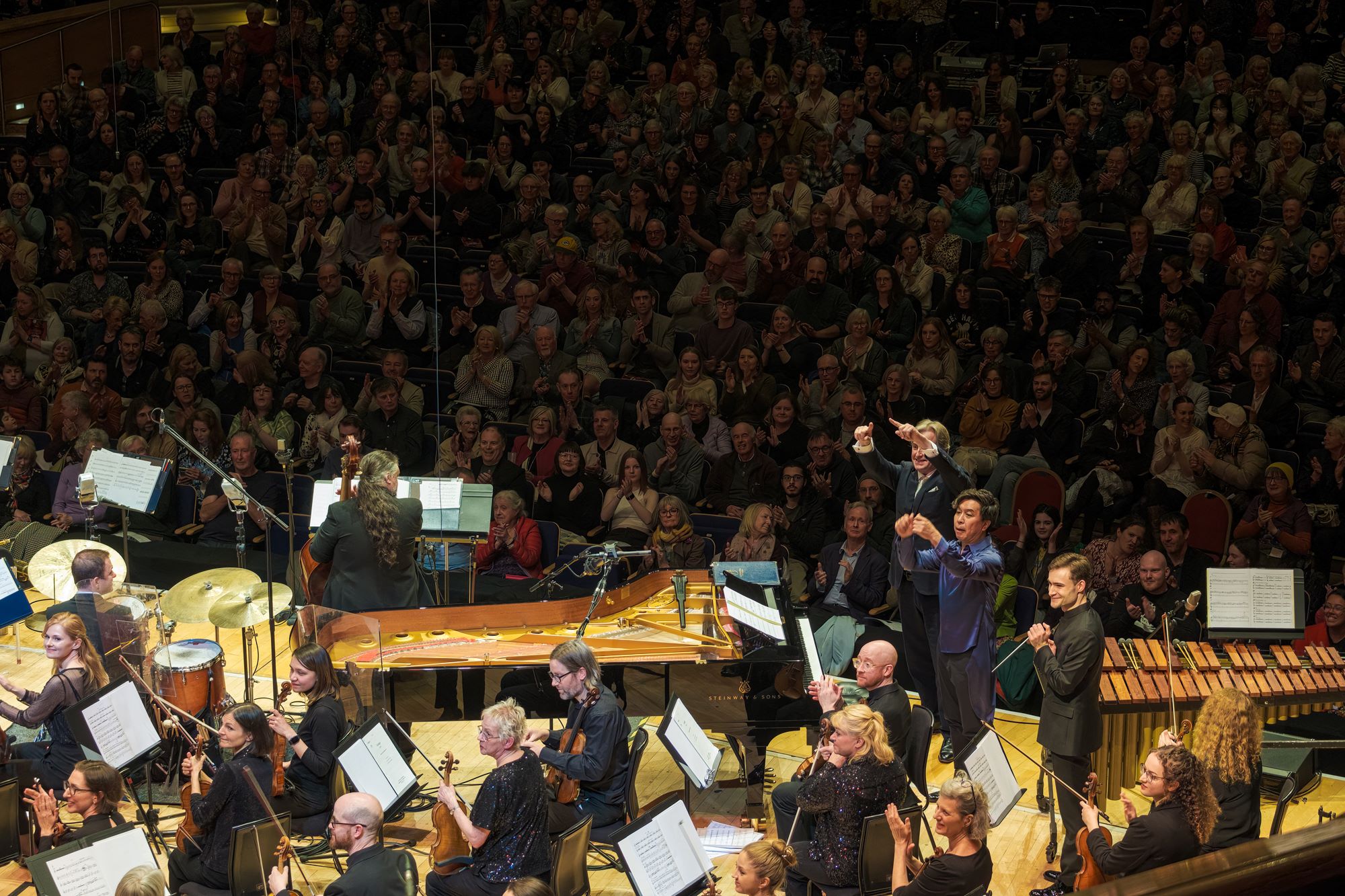Marking the centenary of George Gershwin’s Rhapsody in Blue, the Scottish National Jazz Orchestra and pianist Makoto Ozone became the Royal Scottish National Orchestra’s latest guests in a performance of Tommy Smith‘s re-orchestration of the landmark composition.
Gershwin’s was one of the first works to bring together the classical and jazz worlds, and certainly one of the most successful, and these two great Scottish orchestras paid a most effective tribute. Ozone, who has long crossed back and forth between those two disparate worlds, was an inspired choice of soloist.
The SNJO opened the concert, coming on section by section to perform Duke Ellington’s Black and Tan Fantasy, with the rhythm section of Peter Johnstone (piano), Calum Gourlay (bass) and Alyn Cosker (drums) laying down a solid but relaxed, swinging groove. They stayed in an Ellingtonian mood, moving straight into Duke’s arrangement of Grieg’s In the Hall of the Mountain King, another masterly blend of jazz and classical sensibilities.
Without a pause, Johnstone then played a beautiful, wholly improvised introduction to Florian Ross’s new arrangement of themes from West Side Story. Ross is one of the SNJO’s go-to arrangers, and this work fitted seamlessly with Ellington’s numbers. It moved from one theme from Bernstein’s musical to another, first with the orchestra in unison – a powerful sound – and then from one section to another. Tommy Smith took a forceful solo, accompanied only by Cosker on drums. The only thing wrong was that the piece was over too quickly.
The SNJO toured and recorded Tommy Smith’s orchestration of Rhapsody in Blue nearly twenty years ago. It is a big work, elegantly extending the scope of Gershwin’s original composition, and it was further adapted to include the RSNO under the baton of Bertie Baigent. Ozone played sparkling set pieces and improvisations, and both bands were really into the piece – it was clear the RSNO were happy to swing, often not the case when orchestral musicians take on works outside the classical canon.
While it was a great performance of a superb piece, however, there was a lingering feeling that it could have been even better. In part this is down to the episodic structure imposed by Gershwin, which meant in this version there were sections featuring Ozone, sections with the SNJO and sections with the RSNO, but they rarely seemed to wholly come together as one. It seemed like both orchestras were slightly holding back for fear of one swamping the other.
This was confirmed in part in the second half of the concert, which featured the RSNO alone. They started with excerpts from Bernard Herrmann’s score for Alfred Hitchcock’s Vertigo, which, watched from the heights of the gods in the Usher Hall, was frankly terrifying. They followed it with Leonard Bernstein’s own adaptation of the score of West Side Story, his Symphonic Dances. Joined by some members of the SNJO as guests, the orchestra seemed as if they’d been unleashed, playing with an infectious exuberance that had been missing from Rhapsody In Blue.


